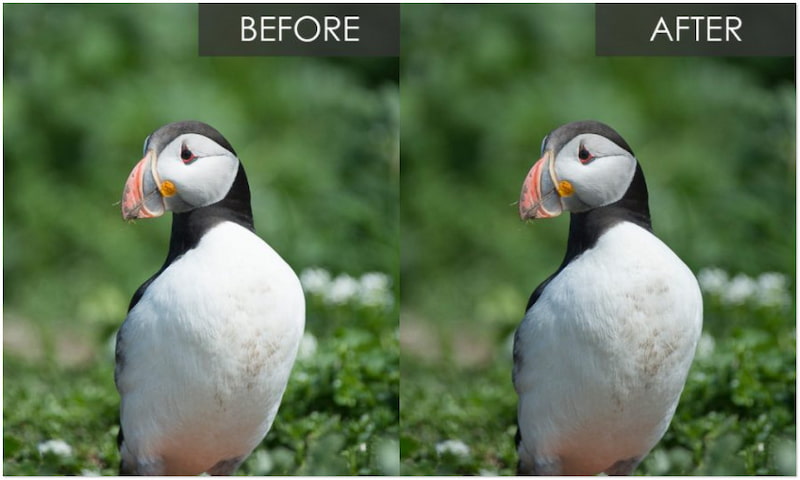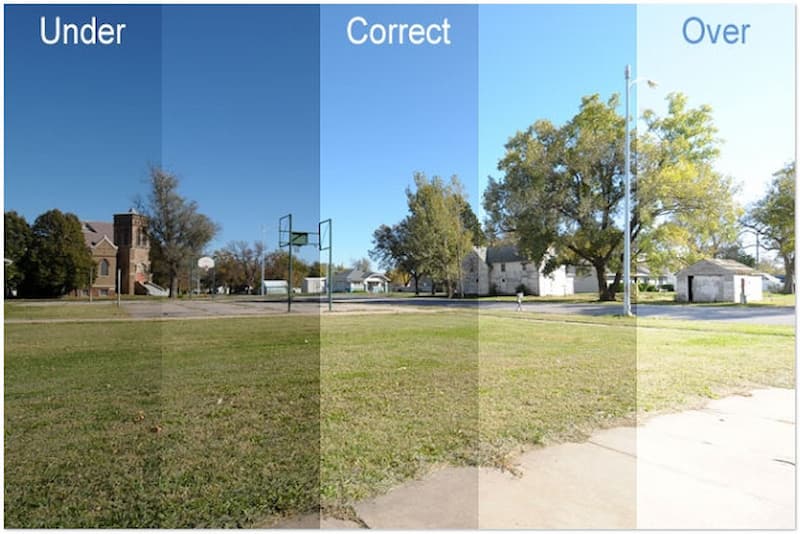Low-Quality Pictures: A Guide to Flawless Photos
In our modern days, images are everywhere. We use them to capture memories, share information, and express ourselves creatively. But not all pictures are created equal. Sometimes, we encounter images that fall short of our expectations, appearing blurry, pixelated, or grainy. These are what we call low-quality pictures. In this post, we will explore the common causes behind these blurry, pixelated photos. More importantly, we’ll equip you with tips to avoid these factors. This way, you can capture stunning visuals that truly shine.

Contents:
Part 1. What is the Image Quality
Image quality refers to how well an image portrays a scene or object. It focuses on how accurately the image captures the original signal. This considers factors like resolution, noise, and color accuracy during capture, processing, storage, and display. In addition, it focuses on how pleasing the image is to the human eye. This includes aspects like sharpness, contrast, and artifacts but can also be influenced by artistic choices and subjective preferences.
Simply put, a high-quality image can be both technically accurate and visually appealing. For instance, a photograph with perfect technical specs might be judged as a low-quality picture if it’s blurry or poorly composed. Conversely, a vintage photo with imperfections might be considered high quality for its artistic merit. Ultimately, image quality depends on the intended use and the viewer’s interpretation.
Part 2. Which Factors Will Cause Low-Quality Image
Several aspects can influence the quality of an image. Some factors have a greater impact than others. Here are five common factors that can lead to low image quality:
2.1 Out-of-Focus or Blurry Images

Sharpness is an essential element of image quality. When the camera isn’t focused properly, an image appears blurry and lacks detail. This can happen due to manual focusing errors or camera shake caused by unsteady hands or slow shutter speeds. Modern cameras offer autofocus features, but achieving perfect focus can be tricky.
You can use some free unblur photo websites to fix it after getting them.
2.2 Dark or Grainy Images

Proper lighting is crucial for capturing detail and avoiding excessive noise in an image. Low-light conditions can lead to dark and grainy photos that lack vibrancy. Cameras have a limited ability to capture light. In low-light situations, the camera needs to increase its ISO to compensate. However, this also introduces digital noise, which appears as grain in the image.
2.3 Loss of Detail

Image formats like JPEG use compression to reduce file size. Although it is convenient for sharing, excessive compression can lead to a detail loss and introduce artifacts in an image. At low compression levels, the impact is minimal. However, with heavy compression, details in the image, like textures or fine lines, become blurred or lost entirely.
2.4 Missed Exposure or White Balance

Camera settings are crucial for capturing a well-exposed image with accurate colors. Exposure is the amount of light captured by the camera sensor. Incorrect aperture or shutter speed settings can result in an image that’s either too bright or too dark. White balance adjusts the color temp of the image to match the lighting conditions. An incorrect white balance can make a scene appear too warm or too cool, with inaccurate color representation.
Part 3. How to Make a Low-Quality Picture Look Better
Even with the best shooting techniques, photos can sometimes benefit from minor adjustments in post-processing. Picwand AI Image Upscaler is a web-based photo editing software that can help you convert low-quality pictures to high-quality ones. Not to mention, this tool is powered by the newest AI technology. It can upscale the image by adding pixels to make it appear larger. It offers various upscale options, allowing you to choose 2×, 4×, 6×, and up to 8× magnification levels. This makes the image look sharper, especially when viewed in smaller sizes.
What to Expect With Picwand AI Image Upscaler:
◆ Unblurs images and increases its resolution up to 8×.
◆ Fixes blurry/grainy pictures and restores photos in no time.
◆ Enlarge pictures with up to 4K resolution with lossless quality.
◆ Compresses the file size while maintaining the original quality.
Here’s how to make a low-quality picture look better using Picwand AI Image Upscaler:
Step 1. Start by reaching the official Picwand AI Image Upscaler website.
Step 2. Click Upload a Photo to insert the poor-quality image you want to look better. On the other hand, drag and drop it directly into the upload area.

Step 3. After uploading the poor-quality image, Start to upscale the image.

Step 4. By default, the image will be upscale in 2×. Still, you can choose your preferred scale level. A higher upscale will result in a sharper image.

Step 5. Once you’re satisfied with the quality of your image, click Download to get a copy.

That’s how to make low quality pictures high quality with Picwand AI Image Upscaler. This tool lets you increase resolution in photos significantly without exerting too much effort. Aside from upscaling low-quality images, it also minimizes noise for a cleaner look.
Part 4. Tips to Avoid Low-Quality Image
Low-quality images can be frustrating, especially when you’re trying to create visually appealing content. By following these five simple tips, you can improve low-quality pictures to high-quality, ensuring they look their best.
4.1 Achieve Sharpness Through Proper Focusing

Ensure your camera is focused on the subject to achieve a clear image. Take control by manually focusing on your subject. Also, you can use single-point autofocus to ensure the camera captures the right area in focus. In addition, use a stable shooting position or a tripod to minimize camera shake.
4.2 Proper Lighting Conditions

Pay attention to lighting for optimal detail and minimal noise. Whenever possible, shoot in natural light during the day. If using artificial lighting, experiment with different setups to avoid harsh shadows or uneven illumination. Understanding how to use lighting effectively can improve the quality and mood of your images.
4.3 Use High-Resolution Settings and Lossless Formats

Capture and save images in high-resolution formats to preserve detail. Many cameras offer different image resolution options. Opting for a higher resolution will capture more detail in your photos, allowing you to crop or enlarge them without sacrificing quality. Additionally, consider using lossless image formats like PNG when saving your images.
4.4 Understand and Adjust Camera Settings

Take control by familiarizing yourself with and adjusting camera settings. Modern cameras offer various settings that can impact image quality. Aperture, shutter speed, and ISO are all essential for capturing a well-exposed image with accurate colors. Dedicating some time to learn about these settings and how they work together can produce higher-quality photos.
Part 5. FAQs about Low-Quality Images
What are low-quality pictures called?
Low-quality pictures can be called several things depending on the context. Usually, a straightforward term for low resolution is Low-Res. Meanwhile, some call them pixelated, blurry, grainy, and poor quality.
What makes a photo low resolution?
A photo is considered low resolution when it has a small number of pixels. These are the tiny squares that make up a digital image. Fewer pixels result in less detail and a blurry appearance when the image is enlarged.
How do I lower the quality of a photo?
Well, there are several ways to lower the quality of a photo. You can use image editing software to decrease the number of pixels in the image. Also, saving an image in a JPEG format with high compression reduces file size but also reduces quality.
Summary
Low-quality pictures can be frustrating, especially when they hinder the message you’re trying to convey. However, by understanding the factors that contribute to low quality, we can take steps to avoid them in the first place. Additionally, there are tools available, like Picwand AI Image Upscaler, that can enhance the quality of existing low-resolution images. Ultimately, being aware of both the causes and potential solutions for low-quality pictures allows us to create and share visually appealing and impactful images.
AI Picwand - Anyone Can be A Magician
Get Started for Free











